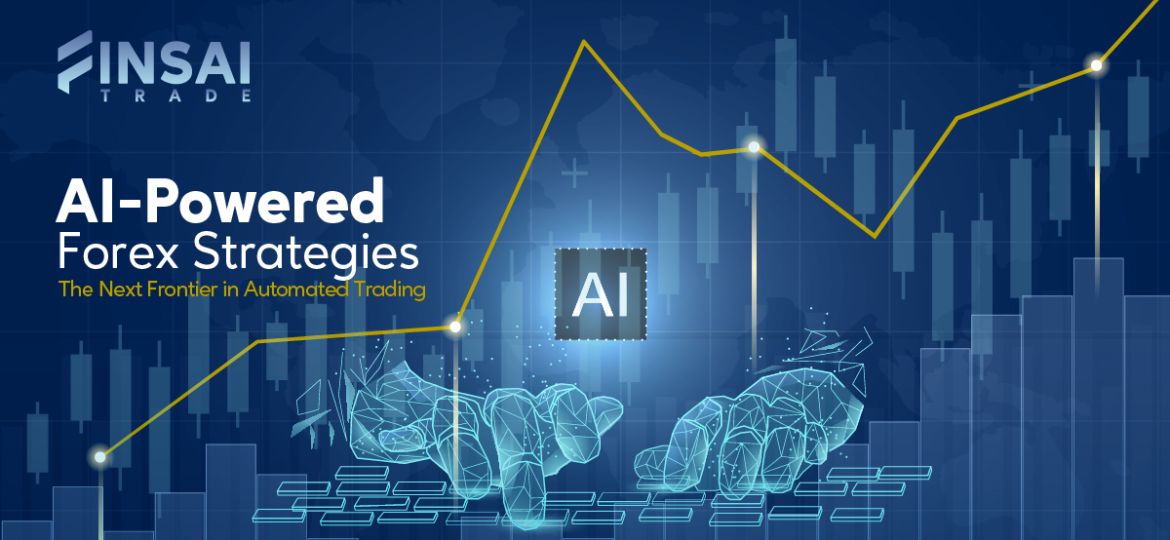“Edge isn’t found in a hunch—it’s engineered.” In the fast-moving forex market, where daily turnover has been measured in the trillions for years (the BIS logged $7.5 trillion per day in April 2022), the real advantage now comes from automated trading algorithms that learn, adapt, and execute with discipline and speed.
This guide breaks down how AI in forex trading is reshaping strategy design, risk control, and execution quality—then shows how to put those ideas to work on Finsai Trade with MT5, ultra-tight spreads (from 0.0 pips), 0 swap fees, and 24/7 live support.
Why AI—And Why Now?
Forex has been steadily “electronified” for a decade. Execution algos, smart order routing, and API-driven trading have moved from banks and HFT desks into the retail toolkit. Central-bank research notes that FX execution algorithms help reduce market impact and information leakage—evidence that machine-led execution is not a fad; it’s market structure.
At the same time, global policymakers warn that as AI makes markets faster and more reactive, shocks can ripple further, faster—raising the bar for AI risk management. Translation: you need algorithms not just for entries, but for defence.
1) Pattern Discovery at Scale: ML for Setups
What it is: Machine learning models trained on price, volume, tick data, macro prints, and even order-book features to surface tradeable regimes.
How it helps: Instead of a single indicator, you blend dozens (momentum, term structure, volatility, seasonality) to identify when your edge is statistically present.
Example playbook:
- Train a gradient-boosted model to forecast next-bar return on EUR/USD using rolling volatility, session-time, and recent economic surprises.
- Only permit trades when the model’s probability of a positive outcome exceeds a threshold you set.
Plug into Finsai: Build and test the logic in MT5 (EAs), then deploy with low commissions and tight spreads so your statistical edge isn’t eaten by costs.
2) News & Sentiment: NLP-Driven Signals
What it is: Natural-language models parse central-bank speeches, economic headlines, and social streams to score algorithmic forex signals in real time.
Why it works: A large literature shows that news sentiment has explanatory power for FX movement and volatility. Modern research continues to validate NLP on exchange rates.
Example playbook:
- On major rate-decision days, throttle size until your sentiment score confirms direction (e.g., “hawkish tilt” on USD).
- If sentiment and price diverge, trade the reversion with a tight stop and a time-based exit.
Plug into Finsai: Keep a news panel and economic calendar open alongside your charts; execute instantly on MT5 mobile or web when sentiment flips.
3) Execution Algos: Slippage Is a Strategy Variable
What it is: Smart execution that slices orders, staggers entries, or switches venues to reduce footprint.
Why it matters: In a zero-sum market, implementation shortfall is the profit killer. Even official studies note that algos help limit impact and information leakage.
Example playbook:
- For higher-volatility pairs (GBP/JPY), use iceberg logic or scaled-in entries.
- For news spikes, add “no-trade windows” during the first seconds to avoid spreads that briefly widen.
Plug into Finsai: Spreads from 0.0 pips, fast fills on MT5, and negative balance protection help you control the hidden costs of execution.
4) Regime Detection: Trade the Market You’re In
What it is: Models classify conditions—trend, range, mean reversion, or event-driven—and route orders to the right automated trading algorithms.
Example playbook:
- In “trend regime,” enable breakout entries and trailing stops.
- In “range regime,” cap profit targets and switch to fade tactics.
Plug into Finsai: Use multiple chart timeframes and saved profiles; link each profile to a different EA or template so your playbook shifts with the regime.
5) AI Risk Management: The Real Edge
What it is: Adaptive sizing, volatility-aware stops, and dynamic hedging governed by model confidence, not emotion.
Why it matters: Regulators keep highlighting AI’s potential to amplify moves; the antidote is positioning discipline baked into code.
Example playbook:
- Tie position size to implied volatility: higher IV → smaller size.
- Auto-ratchet stops when model confidence drops below a threshold; flatten when news risk is imminent.
Plug into Finsai: Use MT5’s built-in risk rules and alerts; 0 swap fees make it cheaper to hold defensive hedges overnight when models advise caution.
6) Portfolio-Level AI: Cross-Asset Confirmation
What it is: Your model ingests signals across USD, gold, oil, and indices to confirm or veto FX bets.
Why it works: Cross-asset flows often lead or confirm FX moves (risk-on vs. risk-off, commodity currencies vs. crude).
Example playbook:
- Long AUD/USD only if oil and industrial metals are bid and the S&P 500 risk proxy is stable.
- Stand down on EUR longs if bund yields slide and risk proxies deteriorate.
Plug into Finsai: Trade forex, crypto, indices, and metals from one login—align signals and execution without platform-hopping.
7) From Backtest to Live: A Clean Handoff
Checklist:
- Data hygiene: De-dup, align timezones, remove look-ahead bias.
- Robustness: Walk-forward, k-fold cross-validation, and out-of-sample tests.
- Controls: Max drawdown cap, daily loss limits, news halts.
- Observability: Log every decision for post-trade analysis.
Plug into Finsai: Start on a free demo, then go live small. With 24/7 support, you always have a human on the other side if something goes wrong.
Putting It Together: A Sample AI-First Playbook
- Signal layer:
- ML model flags a short-term momentum edge on USD/JPY; NLP sentiment on BoJ headlines is neutral-to-dovish USD.
- ML model flags a short-term momentum edge on USD/JPY; NLP sentiment on BoJ headlines is neutral-to-dovish USD.
- Risk layer:
- ATR-based stop; position size scaled to IV; max daily loss at 1R.
- ATR-based stop; position size scaled to IV; max daily loss at 1R.
- Execution layer:
- Split order into three tranches; reevaluate after each fill; trail stop once 0.75R achieved.
- Split order into three tranches; reevaluate after each fill; trail stop once 0.75R achieved.
- Portfolio layer:
- Confirm with gold (risk tone) and US yields proxies; no trade if correlations break.
- Confirm with gold (risk tone) and US yields proxies; no trade if correlations break.
Why it works: You’re not chasing a single “magic” indicator—you’re engineering repeatable edge with algorithmic forex signals, risk rules, and low-friction execution.
Where Finsai Trade Fits In
- Costs that respect your edge: ultra-tight spreads, low commissions, 0 swap fees.
- Speed & control: MT5 on web and mobile, one-click trading, custom indicators, and EAs.
- Protection & support: negative balance protection, 2FA, encryption, and 24/7 live support.
- All markets, one login: forex, crypto, indices, and metals—align your signals and hedge seamlessly.
Ready to build your AI playbook? Open a free demo on Finsai Trade, stress-test your model on live prices, then size up with confidence when your stats hold.
FAQs
Yes—if you start small and treat them like tools, not shortcuts. Begin on a demo, limit live size, and log every decision. Pair simple rules with clear AI risk management, then iterate. Over time, you’ll discover which models suit your temperament and schedule.
Signals can degrade when spreads widen and liquidity thinns. Use a “news guardrail”: reduce size, widen stops, or pause trading into high-impact releases. NLP-based filters can help, but disciplined AI in forex trading means respecting event risk windows.
Model drift, overfitting, and tech failures. Add daily loss limits, out-of-sample validation, and fail-safes (flatten on disconnect). Policymakers have warned that AI can amplify moves, so your first algorithm should be a risk algorithm.
Rules evolve. In recent years, the SEC explored AI-related conflicts in brokerage analytics and disclosures—reminding traders to prioritise transparency and controls. Regardless of jurisdiction, design systems with explainability and audit trails.
Disclaimer: Trading forex, crypto, indices, and metals involves significant risk of loss and may not be suitable for all investors. This article is for educational purposes only and does not constitute financial advice. Always do your own research and trade responsibly.


